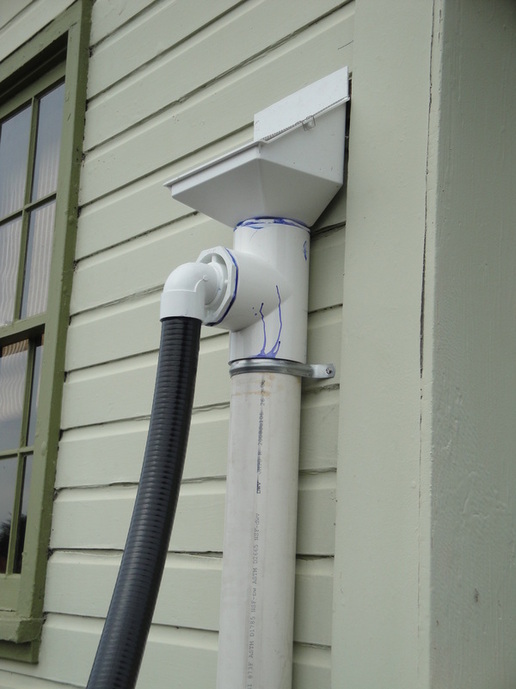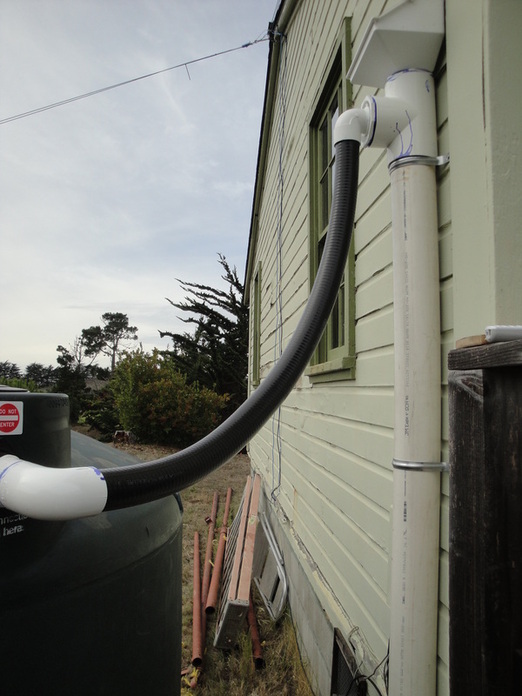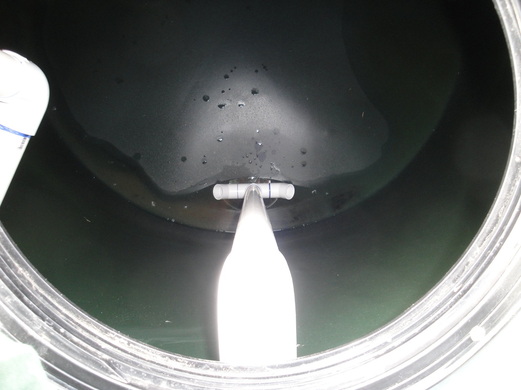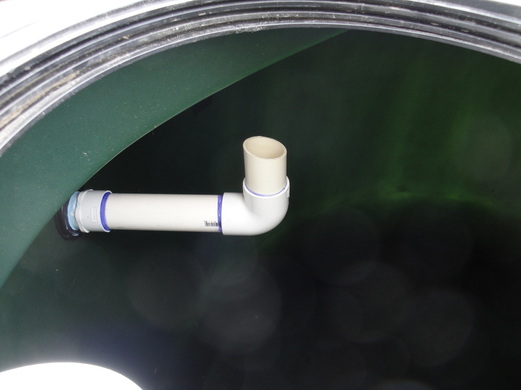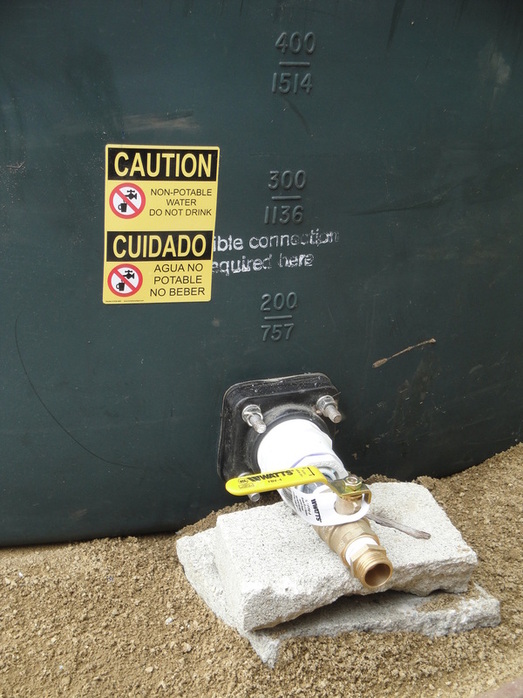Carmel Valley
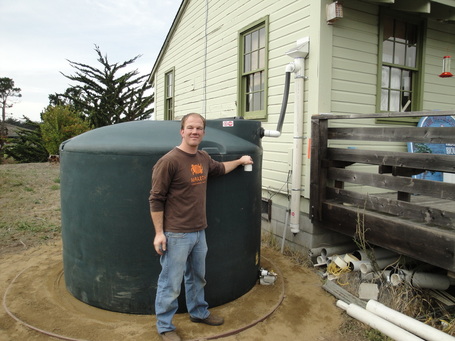
Jason Sharrett, Assistant Director of Development for the Hilton Bialek Habitat, standing in front of the newly installed rainwater harvesting system. The system includes a 1,500 gallon tank, a leaf eater filter with first flush mechanism, a dry conveyance via flexible PVC, a calming inlet to prevent disturbance of sediment, an overflow device when the tank is full, and ball valve for hose connection.
Collected rainwater will be used during the winter months in the green house. The "roof catchment" surface is approximately 1,000 square feet and will yield about 600 gallons per inch of rain. The Monterey Peninsula receives on average 17 inches per year and therefore the roof catchment will yield approximately 10,000 gallons per year. Even though the tank is only 1,500 gallons the water can be used and captured 6-7 times with a reasonable distribution of rainfall from November through April.
Hilton Bialek Habitat's mission is to "inspire students to understand, appreciate, and protect the natural environment". With the addition of a rainwater harvesting system they are taking it to the next level. They can now demonstrate how to collect and reuse water and teach the thousands of students and community members they serve each year in an area that is extremely challenged to find alternative water sources. To learn more about the outstanding opportunities provided at the Hilton Bialek Habitat click on the following link to visit their website. www.mearth.info
Roger Manley was able to help Jason think through the planning and acquisition process and install the system in a matter of a few hours. This is a good DIY project. Beyond several hours of planning and acquisition, the system installation actually took approximately 3 hours. Site preparation and DG installation also took several hours.
Collected rainwater will be used during the winter months in the green house. The "roof catchment" surface is approximately 1,000 square feet and will yield about 600 gallons per inch of rain. The Monterey Peninsula receives on average 17 inches per year and therefore the roof catchment will yield approximately 10,000 gallons per year. Even though the tank is only 1,500 gallons the water can be used and captured 6-7 times with a reasonable distribution of rainfall from November through April.
Hilton Bialek Habitat's mission is to "inspire students to understand, appreciate, and protect the natural environment". With the addition of a rainwater harvesting system they are taking it to the next level. They can now demonstrate how to collect and reuse water and teach the thousands of students and community members they serve each year in an area that is extremely challenged to find alternative water sources. To learn more about the outstanding opportunities provided at the Hilton Bialek Habitat click on the following link to visit their website. www.mearth.info
Roger Manley was able to help Jason think through the planning and acquisition process and install the system in a matter of a few hours. This is a good DIY project. Beyond several hours of planning and acquisition, the system installation actually took approximately 3 hours. Site preparation and DG installation also took several hours.

